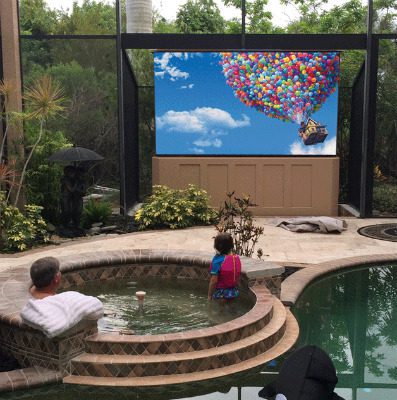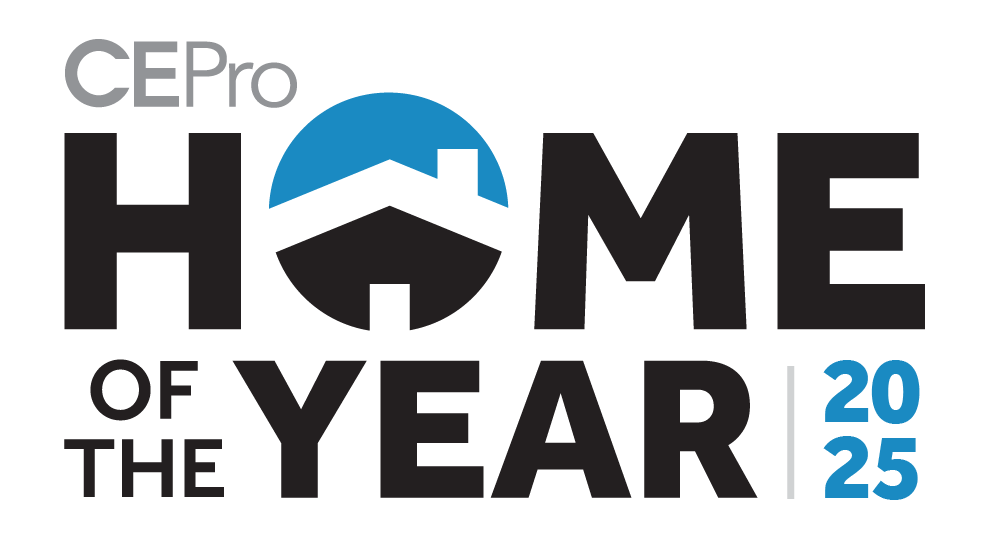Years ago, when the Consumer Technology Association (CTA) and National Association of Home Builders (NAHB) decided to collaborate on the first State of the Builder Technology Market Study, the two associations had to set a definition for a “home theater.” They landed on: “a minimum 42-inch display with five channels of surround sound.”
For integrators working in outdoor environments, the “surround sound” part of that definition can be a challenge when designing and building an outdoor home theater, not to mention selecting the associated mount or lift and other necessary elements. Stealth Acoustics is offering a viable and easy-to-install option with its self-contained Stealth Patio Theater system.
Brian Azzano, vice president of Stealth Acoustics, suggests that using pre-assembled products and then fitting them into the landscaping makes outdoor home theater installs much simpler versus having to choose and install a projector, projection screen, and speakers. With a self-contained system, an integrator simply has to fit the product into the landscape.
“We’ve basically taken the guesswork away from the integrator from having to source things like lifts and control systems and then combining that with [a] large format outdoor screen,” says Azzano.
“We’ve taken all of those technologies and put them into one package that can be easily deployed and commissioned.”
Avoiding Common Outdoor Home Theater Problems
Self-contained systems like Stealth Acoustics’ Stealth Patio Theater also dodge many of the issues traditional outdoor home theater setups have to deal with like image brightness.
Instead of relying on long-throw projectors and projection screens that often have a hard time competing with outdoor light levels and wind conditions, self-contained systems favor outdoor LED TVs designed with extremely high-brightness displays so content can be seen clearly.
Read Next: What Do Integrators Want in Outdoor Technology?
In addition, outdoor LED TVs can be more durable than traditional outdoor TVs or projectors, with Azzano suggesting screens can last for 100,000+ hours of screen-on time.
“The challenge for integrators is finding solutions that can present the best of both worlds so that a client can truly have a mixed-use space,” says Azzano, and self-contained systems can be scaled via add-ons like landscape audio systems or home control systems to create a custom, multipurpose outdoor theater.







